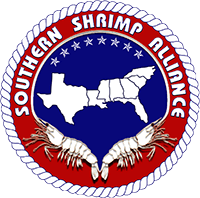The menu says “Gulf shrimp,” but what does that mean?
It should indicate that the shrimp you are about to eat are wild-caught out of the Gulf of Mexico, but at some restaurants this description might only mean that the shrimp were pulled out of ponds with water that feeds into the Gulf of Tonkin.
While the bland tasteless profile of aqua-cultured shrimp generally unmasks vannamei, it can still be difficult to confirm suspicions that what is being presented as wild-caught domestic shrimp is something else.
A new article published in the journal Food Chemistry: Molecular Sciences by researchers at Florida State University reports that it may be possible to quickly and cheaply confirm the species of shrimp marketed to consumers.
In the article, Samuel Kwawukume, Frank J. Velez, Leqi Cui, and Dr. Prashant Singh of Florida State University, joined by David Williams of SeaD Consulting (Tomball, Texas), describe an assay standardized in a study that “showed 100% sensitivity and specificity” for confirming the identity of L. setiferus (wild-caught white) shrimp. Using a low-cost device called the “Watson 4-Well Portable Thermal Cycler,” the researchers standardized a “PCR-coupled lateral flow assay,” that provides a “simple and accurate DNA-based solution for the onsite identification” of shrimp species. The article’s authors characterized the test as “a cost-effective and reliable solution for the food industry’s onsite DNA-based testing needs.” Moreover, the assay was found to be effective in both cooked and raw shrimp.
As noted in the article, current methods for determining the species of shrimp sold in the market are “expensive, time-consuming,” and do not fit the needs of the seafood industry. These methods “generally require overnight shipment of samples to a diagnostic laboratory, expensive high-end equipment (e.g., PCR, real-time PCR, sequencer” and “post-processing of samples (e.g., DNA extraction, PCR product clean-up, samples preparation for sequencing).” In result – as non-governmental organizations that have worked to address fraud in the marketing of seafood have discovered – testing for the species of shrimp (and other seafood products) costs thousands of dollars and has required the involvement of a well-stocked laboratory.
Florida State’s researchers took on the challenge of developing “a species-specific multiplex PCR-coupled lateral flow assay with internal amplification control (IAC) for the onsite identification of L. setiferus that can be performed using low-cost equipment in a resource-limited setting.” And, as explained in detail in the article, the findings have been very encouraging.
With the assay test, users should be able to confirm the species of shrimp being offered for sale using a hand-held device in just two hours without having to send samples to a commercial testing laboratory.
“The U.S. shrimp industry believes that folks generally try to do the right thing, but also understands that in a market saturated with cheap, unfairly-traded imported shrimp, it is tempting to offer customers something different than what is advertised,” said John Williams, the executive director of the Southern Shrimp Alliance. “The ability to confirm marketing claims with an inexpensive, rapid test that can be done outside of a lab would be a huge advance in keeping everyone honest. We are excited about this scientific development and the other advances that have been coming out of Professor Singh’s Seafood Diagnostic Laboratory at Florida State University.”
Read S. Kwawukume, F.J. Velez, D. Williams, L. Cui, & P. Singh’s Rapid PCR-lateral flow assay for the onsite detection of Atlantic white shrimp, Food Chemistry: Molecular Sciences (Jan. 16, 2023) here: https://www.ncbi.nlm.nih.gov/pmc/articles/PMC9868375/
